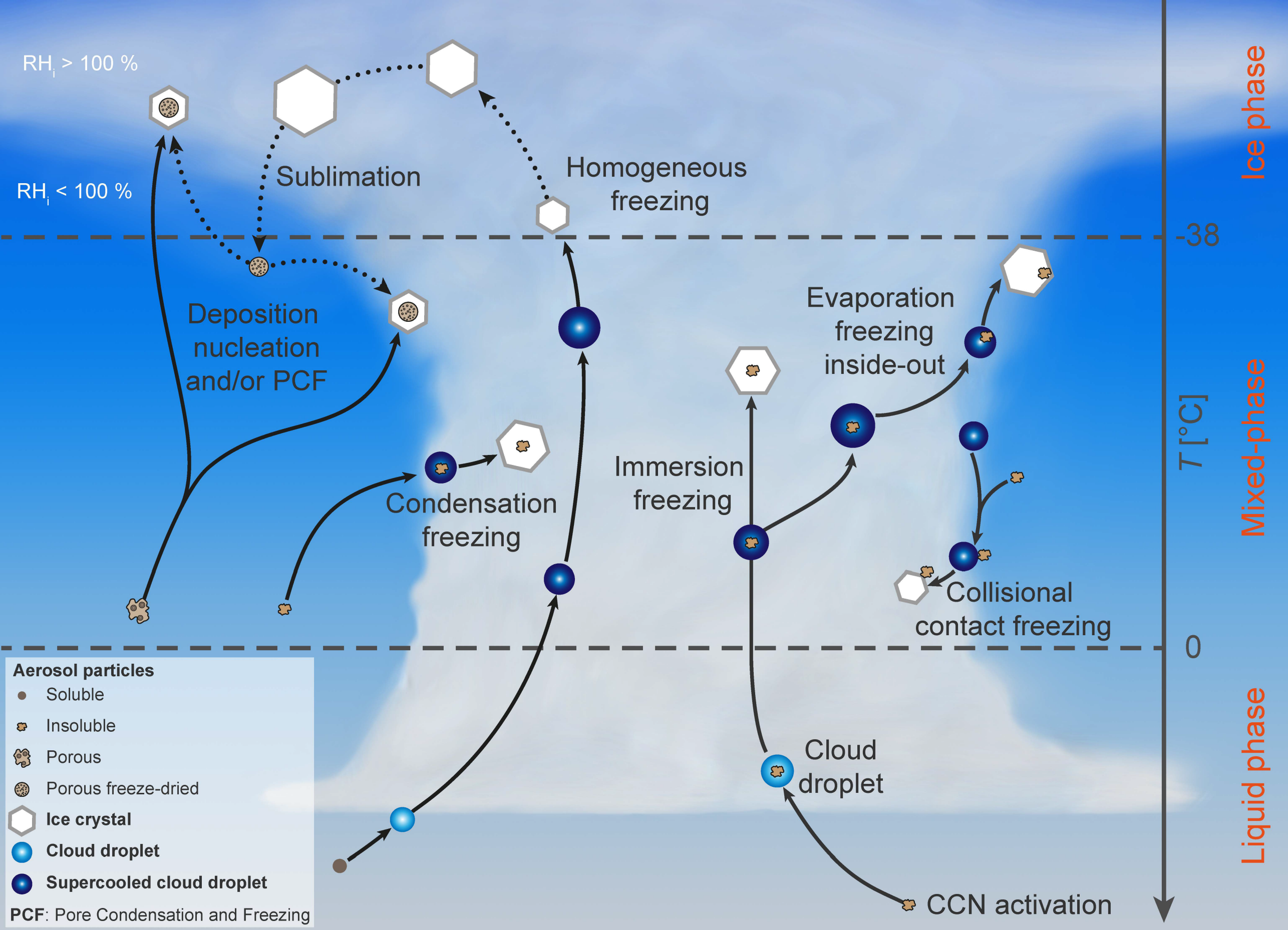Ice Nucleation Research
Childpage navigation
The importance of ice crystals in clouds for our climate is manyfold: Their presence, number and shape influences the optical properties of clouds, the formation of precipitation and their lifetime. All of these aspects have an impact on the radiation balance and therefore on climate. The first step in the chain of evolution of supercooled clouds is the formation of ice crystals.
Laboratory and field studies of aerosols acting as ice nucleating particles (INPs)
In our ice nucleation lab, we focus on the first step in this chain, the primary nucleation of ice and the influencing factors which are: The number, size, and chemical composition of aerosol particles which act as „catalysts“ for the formation of ice and the environmental conditions like temperature and relative humidity.
One aspect that further complicates the study of ice nucleation and its consequences for clouds is that that there are several modes or mechanisms, by which ice can form as illustrated in the figure below:
Our instruments
One of the goals of our work is to study all of these nucleation/freezing modes experimentally to learn more about their relative importance in real world clouds. To achieve this, we have developed several instruments to study these processes individually:
- ZINC The Zurich Ice Nucleation Chamber (focus on deposition and condensation freezing)
- HINC The Horizontal Ice Nucleation Chamber (focus on deposition nucleation and immersion/condensation freezing)
- HINC-Auto The automated and unamnned version of HINC for continuous moniotring of INPs
- IMCA The Immersion Mode Cooling chAmber (an extension for the ZINC instrument for the lab)
- DRINCZ The DRoplet Ice Nuclei Counter Zurich (drop-freezing technique to determine the concentration of Ice Nucleating Particles (INPs) in liquid samples)
- MINCZ The Microfluidic Ice Nuclei Counter Zürich (a microfluidic device to investigate the nucleation of ice in droplets of very small volumes)
Contact
- Location location_onCHN O 12.3
- Phone phone+41 44 633 61 61
- Emailemailzamin.kanji@env.ethz.ch
- web_asset Website
- contactsvCard Download
Institut für Atmosphäre und Klima
Universitätstrasse 16
8092
Zürich
Switzerland

